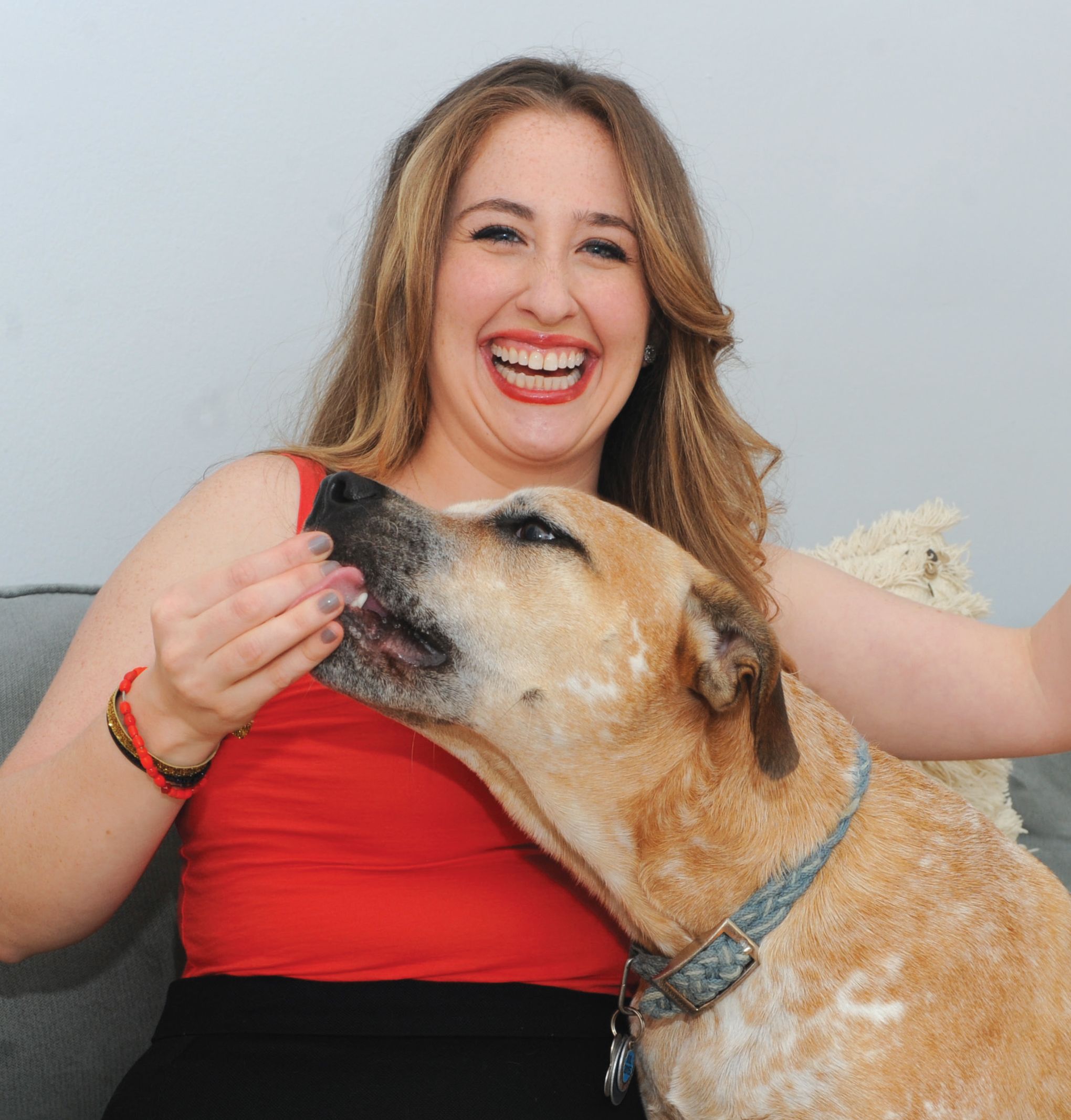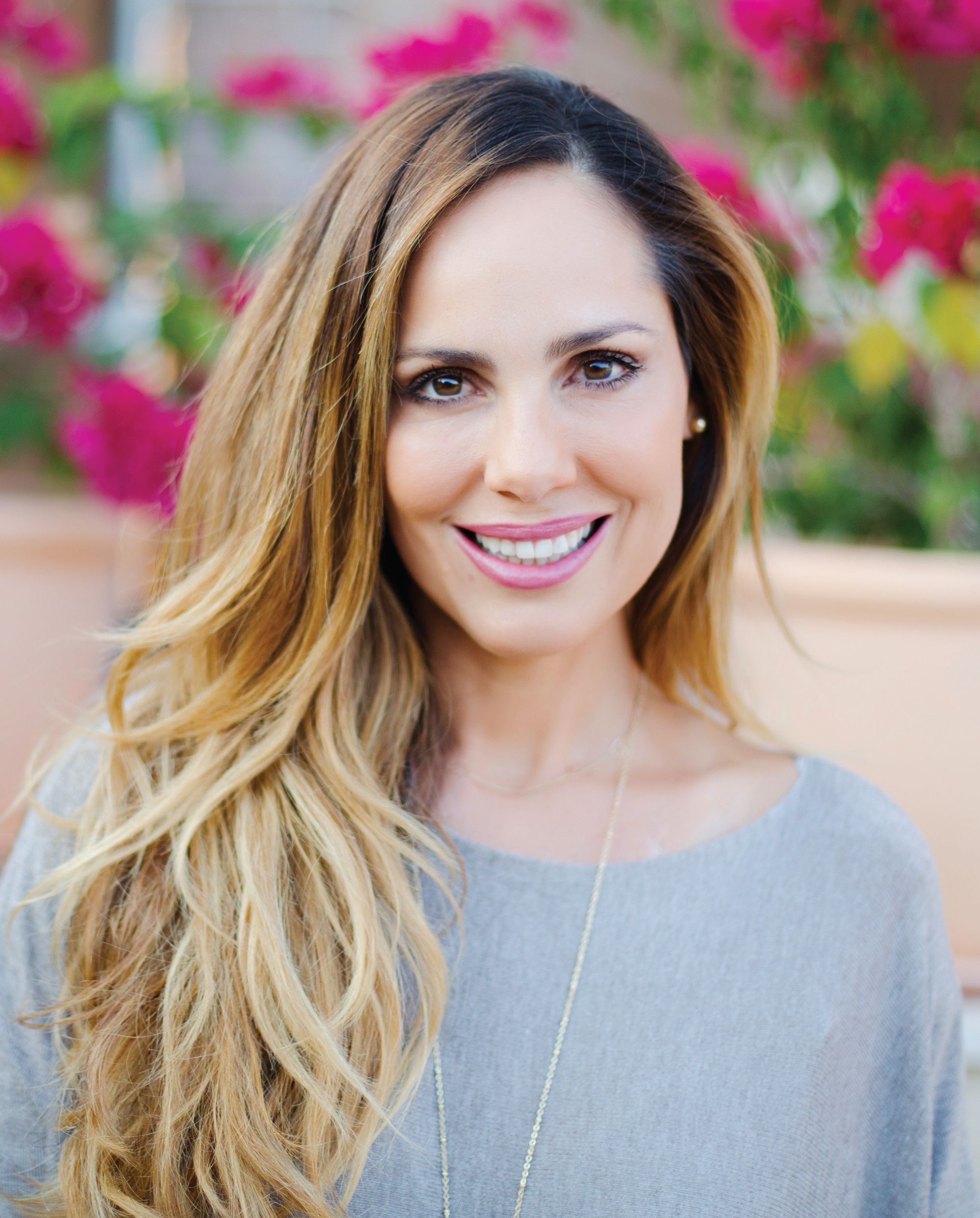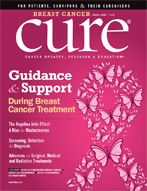Publication
Article
CURE
Angelina Jolie Sparks Rise in Genetic Testing for Treat Breast Cancer
Author(s):
Angelina Jolie has highlighted the benefits of genetic testing and surgery to prevent hereditary breast cancer, but women must also consider the risks.
For years, Caitlin Brodnick ignored her father’s pleas that she undergo testing for the BRCA1 and BRCA2 gene mutations that are associated with a high risk of breast and ovarian cancer. Brodnick was all too aware of the cancer history on her father’s side of the family — the aunt who died of breast cancer at age 32, the grandmother who lost her life to the same disease, not to mention another aunt who died of pancreatic cancer — but she was too terrified to learn about her own risk.
Photo by Susan Farley

Like Angelina Jolie, CAITLIN BRODNICK underwent prophylactic surgery after learning that she carried a BRCA mutation. [Photo by Susan Farley]
Finally, at age 26, Brodnick gave in and made an appointment with a genetic counselor. Turned out her fears were warranted: She tested positive for mutated BRCA1.
“When I got the results, it felt like I already had breast cancer,” Brodnick says. “I froze. I panicked. I was researching the wrong information. Then I realized this was not the way I should live my life. I wanted to enjoy my 30s.” After discussing her options with her genetic counselor, Brodnick opted to have a prophylactic double mastectomy in late 2013, when she was 28.
A budding comedian who lives in New York City, Brodnick says much of her inspiration to take such a radical move came from Angelina Jolie, the actress who had an elective double mastectomy in early 2013 after learning she tested positive for mutated BRCA1. “That was really helpful, because I figured if the sexiest woman in the world was OK with losing this very sexual body part, I could be brave and strong, too. It gave me more confidence,” Brodnick says. “It was one of the best decisions I ever made.”
Photo by © Armando Gallo/Corbis

Photo by © Armando Gallo/Corbis
Choosing Surgery
Genetic testing is on the rise among women who believe they are at high risk for breast cancer — a trend that has been dubbed the “Angelina Jolie effect” because it occurred after the actress’s public disclosure of her BRCA status and her decision to remove her breasts, which was followed two years later by the elective removal of her ovaries and fallopian tubes. A retrospective study performed at a Toronto hospital in 2014, for example, reported that the number of women referred for genetic counseling skyrocketed by 90 percent in the six months after Jolie’s announcement. The number of women at the hospital identified as BRCA1 or BRCA2 mutation carriers during that period jumped by 110 percent.Although statistics about healthy women opting for prophylactic surgery have yet to be tallied, genetic counselors and breast surgeons report a notable increase in queries from women concerned about their cancer risk. In 2013, after Jolie’s announcement, one oncologist who had studied mastectomy rates estimated that 50 percent or more of healthy women found to have BRCA mutations were opting for risk-reduction surgery, and that the trend toward bilateral mastectomy among these women seemed to be on an upswing.
“I have heard from many women that if arguably the most beautiful woman in the world can face this risk, then they can, too,” says Susan Domchek, executive director of the Basser Center for BRCA at the University of Pennsylvania’s Abramson Cancer Center. “That doesn’t mean they necessarily make the same decisions Angelina Jolie did, but the idea that she was able to manage this information is actually quite empowering for them.”
Research has proven that choices like Jolie’s do greatly reduce the cancer risk among women who test positive for BRCA1 or BRCA2 mutations. Bilateral mastectomy reduces the risk of breast cancer by up to 95 percent in women who carry a BRCA mutation and by 90 percent in women who also have a strong family history of breast cancer, according to the National Cancer Institute. Removing the ovaries and fallopian tubes before age 50 in BRCA-positive women slashes their risk of breast cancer by 50 percent and of ovarian cancer by 90 percent, and also lowers the risk of dying of ovarian cancer. In fact, removal of the ovaries and fallopian tubes is something doctors may recommend as early as age 35 in women who test positive for BRCA mutations. It was recommended to Brodnick, but she decided to postpone considering that option until after she turns 40.
Even before Jolie’s surgeries, prophylactic mastectomies were gaining in popularity among women who already had cancer but were eligible for breast-conserving surgery. The proportion of women with early-stage cancer in one breast who chose double mastectomies over less radical procedures, such as lumpectomies, rose from 1.9 percent in 1998 to 11.2 percent in 2011, according to a 2014 retrospective study of more than 1 million women.
Still, anyone who is considering following in Jolie’s footsteps does face risks, and many of the professionals who work with those women worry that the downsides of both genetic testing and prophylactic surgery may be overshadowed by Jolie’s star power.
Genetic Guesswork
“These mutations are unusual — the incidence in the U.S. is one out of 300 to 800 people,” says Susan Brown, director of health and mission education at the Susan G. Komen Foundation. “There may be a lot of women who undergo testing, along with the associated anxiety, but who probably don’t even need to be tested. That’s what people may have missed in the Angelina Jolie story, even though she told it in a responsible way.”Another risk that may have been downplayed in the Angelina Jolie story is that genetic testing aimed at helping to prevent breast cancer is still far from a perfect process. Ellen Matloff, a genetic counselor who has studied the adverse events associated with genetic testing for cancer-related mutations, has discovered three common errors that the people who perform and interpret the tests can make: They order the wrong test, they misinterpret the results, or they provide inadequate counseling as to what patients should do with the results. A 2014 study that Matloff co-authored, published in The Cancer Journal, reported that many women who underwent genetic testing were referred for unnecessary surgeries because their results were misread.
Such mistakes often occur when the results of the genetic tests are fuzzy. “There’s a chance the testing will find a ‘gray area’ result — a variant that’s not clearly a disease-causing mutation, and may instead be a variation in the gene that doesn’t increase the risk of cancer at all,” says Matloff, CEO of the digital-health company MyGeneCounsel and founder and past director of the cancer genetic counseling program at Yale School of Medicine. While those ambiguous results, called “variants of uncertain significance,” can occasionally turn out to raise the risk of cancer, most often they don’t. Yet they can scare women into having surgeries they don’t need, Matloff says.
And not everybody is qualified to interpret genetic tests. Because of the strong link between BRCA status and breast cancer, the tests are increasingly offered by OB/GYNs, family practitioners and other physicians — but they may not be the most qualified professionals to counsel women on the results, particularly when there are unclear variants. Yet many of the women tested by those doctors don’t receive more expert counseling about their results: A study published online in October by JAMA Oncology found that among 3,628 women who were sent for BRCA testing by their physicians, less than 37 percent received genetic counseling.
Working with a certified genetic counselor before and after genetic testing can help alleviate uncertainties associated with BRCA testing. Genetic counselors spend time digging into patients’ family histories and then counseling them about all of their options for preventing the disease based on their genetic makeup, age, family risk, previous history of cancer and many other factors — including their ability to handle the information emotionally.
“For some women, having that information is less stressful than worrying about their risk, but for others, knowing they have a mutation might actually increase their anxiety,” says Brown, of Susan G. Komen. “However, genetic counseling does give them options about how to manage that risk.”
Those lists of options, though, should come with cautions. For instance, Matloff says, patients considering preventively removing their ovaries must first be counseled about the risks of the procedure, particularly if they have not reached the age of natural menopause.
Genetic counselors are also up to date on the latest information about newly discovered mutations that may impact breast cancer risk. Joy Larsen Haidle, president of the National Society of Genetic Counselors, says more and more women are now being offered gene-testing panels that look not just for mutations to BRCA1 and 2, but also to ATM, CHEK2 and PALB2 — all of which are genes in which mutations may increase the risk of breast cancer, depending on an individual’s family history. Ideally, even before a healthy woman is tested, a close relative who has already developed cancer should undergo genetic screening for such genes; this raises the chance that a hereditary mutation, if one is present in the family, will be identified, even if some healthy family members end up testing negative for it.
“You want someone, such as a genetic counselor, who’s going to look at the full family tree and recommend the appropriate test for the pattern of cancers that’s in your family,” Larsen Haidle says. “The technology and the knowledge about each of the genes are expanding so rapidly that it’s difficult for the average provider to stay current.”
Improving Surgical Outcomes
Some women who test positive for cancer-associated mutations may find that there are options for reducing their risk that don’t require radical prophylactic surgery. Women who discover the mutations when they’re in their 20s are often encouraged to undergo increased surveillance, with more frequent mammograms and advanced technologies like magnetic resonance imaging (MRI). Older women who have already had children might consider removing their ovaries first, especially if they have a family history of ovarian cancer, suggests Susan Love, medical director of the Dr. Susan Love Research Foundation. “Very often people do it the other way around, but having your ovaries out first reduces your risk of breast cancer, as well as ovarian cancer,” she says.For women who ultimately opt for mastectomy, there is an expanding selection of procedures that can improve the aesthetic outcome. One such surgery that’s increasingly offered to women with no prior history of breast cancer is called nipple-sparing mastectomy. The procedure involves removing all of the breast tissue, but preserving the outside skin and the nipple, creating a pocket that can be filled with tissue from another part of the body or with an implant.
“It looks like a native breast,” says Elizabeth Stirling Craig, assistant professor in the Department of Plastic Surgery at The University of Texas MD Anderson Cancer Center. “Maintaining the nipple and areola that you are born with is always better than anything a plastic surgeon can create.”
Photo by Rhonda Duron

After learning she had a BRCA1 mutation, PAOLA GERBER, a mother of two who wanted to reduce her cancer risk, opted for prophylactic double mastectomy. [Photo by Rhonda Duron]
That’s not to say there are no risks to prophylactic mastectomy, says Gildy Babiera, a professor in the Department of Surgical Oncology at MD Anderson who frequently works with Craig to treat women undergoing the procedure. In addition to the complications that can occur with any surgery, such as adverse reactions to anesthesia, there is a chance the reconstruction could not end up looking as good as the patient hopes it will. Then there’s the emotional reaction to losing both breasts. “It is likely patients will have some sense of loss and even grieve,” Babiera says. “But those who are happiest and content with their choice are those who have been part of the decision and have been fully educated about the risks and benefits of surgery.”
Paola Gerber decided to have her breasts and ovaries removed after she tested positive for mutated BRCA1 in 2012. Gerber, a former Miss Peru who now lives in Allen, Texas, had a history of breast cancer on her father’s side of the family, and she was worried that if she didn’t act fast, her son and daughter might grow up without a mom. Gerber, now 37, does not regret the decision. And even though she had her surgeries before Jolie went public with her own BRCA status, Gerber says she could relate to the actress’s outspoken approach to dealing with the news.
“When she said she was going to have a double mastectomy, I thought it was great she was so open about it,” Gerber says. “When you’re a mom, the first thing that comes to mind is wanting to be healthy for your children so you can live a long life for them. People shouldn’t be afraid to get the test. Knowing is power.”





